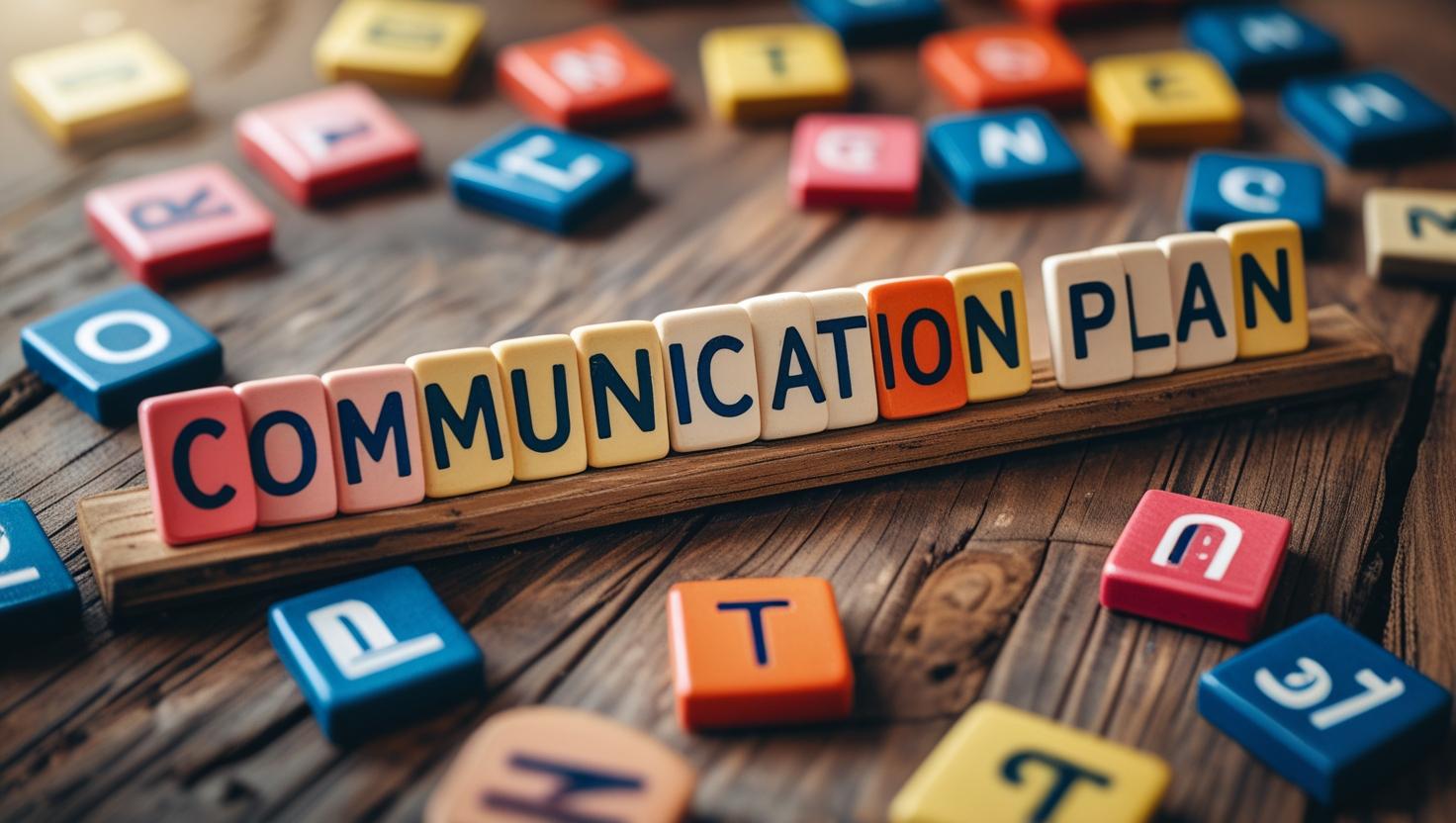
9 Things to Think About When Developing a Communications Plan
The project’s biggest supplier had just pulled out and the CEO asked the question that made our hearts drop. “Why is this the first time I’m hearing about this?” The project manager had been sending weekly updates and the steering committee had been getting their reports. What had gone wrong?
It’s Monday morning and your inbox is flooded with emails from stakeholders asking for project updates you thought you’d already sent. Your steering committee is frustrated because they received technical details they didn’t need, while your project team is missing critical information they actually do need. Does any of this sound familiar?
Getting communication right when running a project is a tricky business. It’s more than just pushing out the occasional project update. You need to think about everything from how you’ll communicate with your team, the way you’ll report to your steering committee, how you’ll keep your wider stakeholders informed and how you will deal with feedback from all those different groups of people.
Without a solid communications plan you’ll very quickly get into trouble and your project communications will be disjointed at best, inconsistent and irrelevant at worst. PMI states that poor communication is a contributing factor in 56% of failed projects.
So how do you develop a good communications plan? Here are 9 things you should think about:
1. Know Your Environment
Before you can build an effective communications plan, you need to understand the environment you’re working in. Consider factors like organisational culture, security requirements, geographic spread of stakeholders and existing communication norms.
For example, a Government department will need a completely different communications approach to a creative agency.
A Government environment may require formal briefings, have strict hierarchical reporting and have different levels of security clearance for information sharing. In contrast, a creative agency might thrive on informal check-ins, visual dashboards and open collaborative spaces.
Quick environment check: What’s the preferred communication style here? Formal or informal? How quickly do people expect responses? What’s the security or confidentiality requirements?
2. Understand the Different Groups You’re Trying to Reach
Think about the different groups of people who will need and/or want information from you. Using a stakeholder matrix is a great way to do that. You will be communicating with them regularly during the project so you need to make sure you understand how and when they like to receive information.
Create a simple matrix like this for each stakeholder group:
- Who they are: Project team, steering committee, end users, project sponsors, etc.
- What they need: High-level status, detailed technical updates, impact on their work.
- When they need it: Weekly, monthly or triggered by specific events.
- How they prefer it: Email summary, dashboard, face-to-face meeting, Slack updates.
There’s no point sending your PMO your status report on a Wednesday if they have to submit their report on a Tuesday.
Understanding these timing requirements upfront prevents frustration and ensures your communications support other people’s workflows.
3. Define What You Want to Achieve
You need to be crystal clear about what you want to achieve with each communication. This will help you focus on creating the right sort of content and choosing the appropriate distribution channels.
Different objectives require different approaches:
- Building awareness: Broad, accessible updates to large groups.
- Driving action: Clear, specific requests with deadlines and next steps.
- Gathering feedback: Interactive formats with easy response mechanisms.
- Managing expectations: Honest, proactive communication about challenges or changes.
For example, if you want to get customers to participate in user testing, your approach should focus on benefits to them and make participation as easy as possible. But when updating your steering committee you’d focus on business impact, risks and decisions needed.
4. Choose Your Communication Channels and Formats
You need to think about how you’re going to communicate a wide variety of information. Anything from detailed project status updates to quick team notifications to external stakeholder briefings.
Match your format to your audience and purpose:
- Executive dashboards: High-level metrics, visual progress indicators, key risks.
- Team updates: Detailed task status, blockers, upcoming deadlines.
- Stakeholder newsletters: Impact on their work, key milestones, what’s coming next.
- All-hands presentations: Big picture progress, celebrating wins, addressing concerns.
Using the work you did on the stakeholder matrix, you’ll be able to focus on presenting the information in the format most preferred by each group. Some prefer detailed written reports they can review in their own time, others want quick visual updates and some need face-to-face discussion to ask questions.
5. Create Templates and Stick to the Plan
Consistency is crucial for effective communication. Develop templates for your regular communications so stakeholders know what to expect and where to find key information.
Template elements to include:
- Standard headers and sections (progress, risks, decisions needed).
- Consistent terminology and definitions.
- Regular timing and distribution lists.
- Clear action items and ownership.
That always sounds easy but when you’re under pressure it can be difficult. However, keeping the message consistent is important as you don’t want to give people irrelevant information or create confusion with conflicting updates. Having templates makes it easier to maintain consistency even when you’re stretched thin.
6. Work with the Corporate Communications Team
If your organisation has a corporate communications team, make sure you work with them early in your planning process. Not only will they be able to help you craft your messages, they’re likely to have templates and other tools that will make your job much easier.
They can help with:
- Approved messaging templates and brand guidelines.
- Distribution channels and stakeholder contact lists.
- Crisis communication protocols.
- Professional design for presentations and documents.
If you’re really lucky they will assign someone to work directly on your project communications. Even if they can’t provide dedicated support, they’re usually happy to review your key communications before they go out.
7. Set Up Metrics and Monitor Your Communications
Make sure you set up ways to measure the effectiveness of your plan before you start. Once the plan is up and running, monitor and measure the results regularly to make sure it’s doing its job.
Useful metrics to track:
- Engagement: Email open rates, meeting attendance, response rates to requests.
- Understanding: Follow-up questions, misunderstandings, repeated explanations needed.
- Satisfaction: Regular pulse surveys, informal feedback, stakeholder sentiment.
- Action: Completion rates for requested actions, meeting participation.
For example, if you’re sending weekly status emails but only 30% are being opened, that suggests the format or timing isn’t working. If you’re getting lots of follow-up questions about the same topics, your explanations might need to be clearer or more detailed.
If the results are not what you are looking for, you can easily tweak the plan. The key is catching issues early before they become bigger problems.
8. Be Open to Feedback and Continuous Improvement
It’s not always easy to hear that your carefully crafted communications aren’t landing as intended. If you do receive feedback, use it as valuable input to improve your next round of communication.
Common feedback themes and solutions:
- “Too much detail” → Create executive summaries with optional detailed appendices.
- “Not relevant to me” → Better segmentation of your stakeholder groups.
- “Too infrequent” → Add quick pulse updates between formal reports.
- “Hard to find key information” → Improve formatting and use consistent section headers.
Proactively ask for feedback through brief surveys or informal check-ins. Questions like “what communication from this project has been most/least useful?” can provide valuable insights.
9. Use Tools to Support You
There are loads of tools out there that you can use to make communication easier and more effective. Take full advantage of them as they will make your job much easier and help you monitor and measure the effectiveness of your communications.
Categories of helpful tools:
- Project dashboards: Real-time status visibility for stakeholders.
- Email automation: Scheduled updates, triggered notifications.
- Survey tools: Quick feedback collection and pulse checks.
- Collaboration platforms: Centralised discussion and document sharing.
- Analytics tools: Track engagement and communication effectiveness.
The key is choosing tools that fit your stakeholders’ existing workflows rather than forcing them to adopt something entirely new.
Quick Reference Checklist
Before launching your communications plan, make sure you can answer these questions:
- Do I understand the cultural and practical constraints of my environment?
- Have I mapped out who needs what information, when and how?
- Are my communication objectives clear for each stakeholder group?
- Do I have appropriate channels and formats for different types of updates?
- Have I created templates to ensure consistency?
- Am I leveraging available corporate communications resources?
- Do I have metrics in place to measure effectiveness?
- Have I built in mechanisms for collecting and acting on feedback?
- Am I using tools that make communication easier rather than harder?
Psoda Plug
Psoda is project portfolio management software designed by project professionals for project professionals. With built-in communication dashboards and real-time project status updates, you can keep stakeholders informed whether you’re in a meeting room or on site. Sign up for a free demo today.


